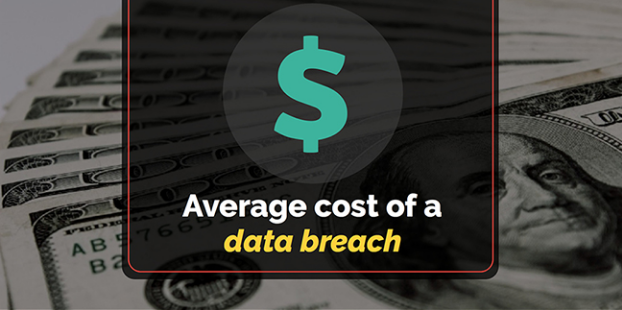The average data center or server room of any security conscious organization will be a fort were you to attempt breaking in, all to good reasoning, they have the grey matter of the business. It is securing the 1s and 0s however, that has proven a challenge for a lot of companies.
With hackers making more money in the 2015-2016 period, no one can argue with the fact that we all have been looking more at the part we can put our hands on, rather than the part that we cannot work without.
The average cost of a data breach is now $4 million
Cyber security incidents continue to grow in both volume and sophistication, with 64 percent more security incidents reported in 2015 than in 2014. As these threats become more complex, the cost to companies continues to rise. In fact, the study found that companies lose $158 per compromised record. Breaches in highly regulated industries like healthcare were even more costly, reaching $355 per record – a full $100 more than in 2013.
There is hardly any loss figure small enough for a company to turn a blind eye, and $158 for each line stored in a database would be a nightmare loss for companies that have years of data stored and constantly worked on. Perhaps the most practical way of getting more secure is to engage managed service providers (MSPs), most who will through using policies that drive all security concerns:
As if that was not enough, 2016 still has a lot to expect in terms of data protection problems and the solutions that experts have been working on to counter each of these.
This webinar cites some of the many changes that will come through in 2016 and explains some readiness points that companies should be focusing on, including backup and disaster recovery strategy formulation.
Policy-driven Security Helps You Stay Ahead of the Bad Guys
TraceTM Labs just published a new eBook, Cybercriminals: Unmasking the Villain, which provides insight into cybercriminals’ evolving strategies and tactics. There are three points in particular that I want to highlight:
- “31% of all cyber attacks are directed at businesses with less than 250 employees”
- “42% of confidential data loss is caused by employees” often due to well-meaning employees “opening unauthorized email attachments, forwarding sensitive information or storing data insecurely”
- “Hacking a small business to get into a larger business is now standard operating procedure for cybercriminals.”
These evolving cybercriminal practices underscore the reality that proper, up-to-date security practices are more vital than ever to the health and well-being of every company, no matter its size. The risks are too high, and the incidence of exposure and breaches is only increasing. Read more here …
With small companies being targeted as much we once knew only huge ones would get attacked, there is clear need to embrace the IT outsourcing approach to securing data in any organization. Seeing as many employees pose a threat to the data, outsiders with the mandate to protect it would mitigate this risk.
Greg McCulloch, from Aegis Data had this to say about the current state of data security affairs:
“While cyber security is of paramount importance when it comes to data centres, the majority of this protection is unseen, hidden in lines of code and firewalls. It can be stressed to the client the multiple layers of cyber security, but all of this is intangible,” he says. Read more here …
Perhaps the first thing required is for companies to agree to the threats that come from being overly protected physically and weak on the inside, and then work on strengthening security from the inside going out. Information Technology asset management with the knowledge and resources to protect data using the lines of code mentioned above will harden the core (data) of all the hardware that we could as well have made out of stone for further protection.




